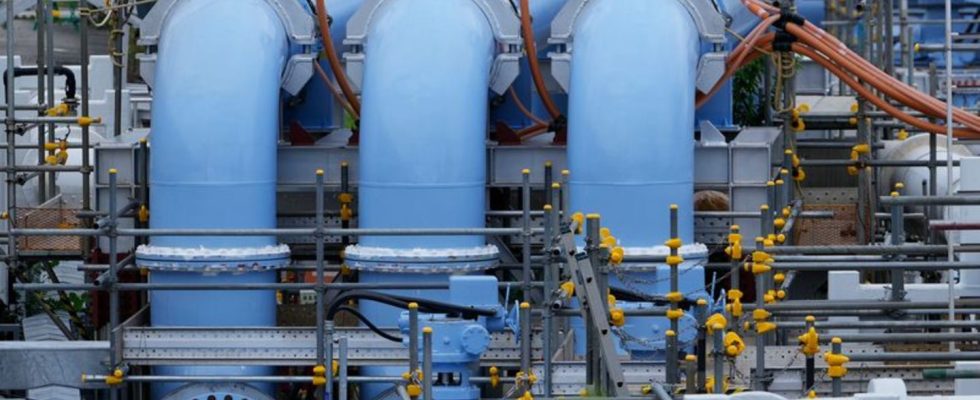nuclear accidents
Japan begins dumping Fukushima coolant water
The blue pipeline for transporting seawater is part of the Fukushima Daiichi nuclear power plant’s facility for discharging treated radioactive water into the sea. photo
© Hiro Komae/AP/dpa
Japan begins discharging treated cooling water from the nuclear ruins into the sea. Until recently, Japan’s fishing associations rejected the project. The government assures that there is no reason to worry.
A good twelve years after the worst case scenario in Fukushima Japan with the controversial discharge of treated cooling water from the Fukushima nuclear ruins into the sea. Prime Minister Fumio Kishida announced on Tuesday that dumping would begin on Thursday at the earliest.
His government argues that the site of the nuclear ruins is running out of space to store cooling water, thereby hampering decommissioning work. The conservative head of government said that draining the water into the Pacific Ocean is something that “cannot be postponed”. Japan’s fisheries associations expressed their strong opposition to the last day. There are also concerns and criticisms in countries like China.
The project is expected to take 30 years
In March 2011, a severe earthquake and massive tsunami caused a core meltdown at the Fukushima Daiichi nuclear power plant. The reactors have to be further cooled with water stored in more than 1000 huge tanks. But now, according to the operating company Tepco, there is no space for it. In addition, long-term storage on the site threatens to impede the decommissioning work on the nuclear ruins. There is also a risk of leaks, it said.
Therefore, the more than 1.3 million liters of water are to be channeled into the sea via a one-kilometer-long tunnel specially built for this purpose. This is expected to take around 30 years.
IAEA approves dumping plans
However, before being dumped in the Pacific, the contaminated cooling water is first treated. However, the filter system cannot filter out the radioactive isotope tritium. Tepco therefore wants to dilute the water to such an extent that the tritium concentration drops to 1,500 becquerels per liter, which corresponds to less than a fortieth of the national safety standard.
Japan’s nuclear regulatory agency recently gave the green light. The International Atomic Energy Agency (IAEA) had previously approved the dumping plans. Japan meets international safety standards.
The effects on people and the environment are “negligible”, the IAEA found. Experts point out that nuclear power plants all over the world have routinely discharged contaminated cooling water into the sea for decades. However, Japan’s fisheries associations fear that the reputation of their products will be further tarnished. You’ve been trying to recover in business since the super meltdown.

